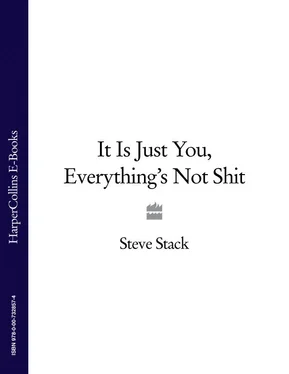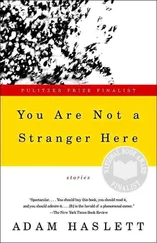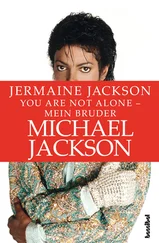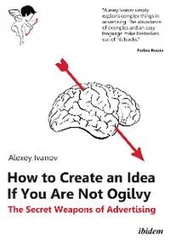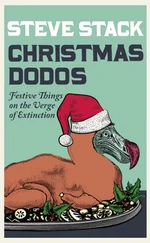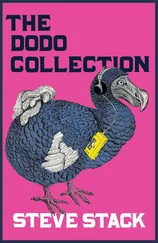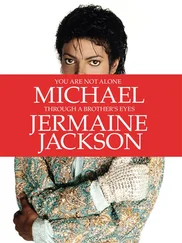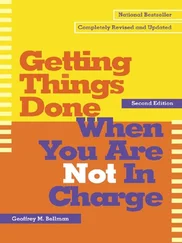Bacon sandwiches come in all shapes and sizes, with many accompanying ingredients, but—and here is the ultimate accolade—they are all great. A long, crunchy baguette filled with exotic salad and slaverings of mayonnaise can be delightful, but then no connoisseur of the bacon butty would turn down two slices of white with a bit of butter and brown sauce either. It doesn’t matter how you serve it up, a bacon sandwich is bloody marvellous.
Everyone who makes a bacon sandwich will claim to be the finest proponent of the art in the whole of Christendom. I am no exception and here is my classic recipe:
3 rashers of smoked back bacon (it is worth stumping up for some really good quality stuff from a proper butcher but, let’s face it, anything will do)
2 slices of hand-cut crusty white bread
some rocket leaves
a handful of cherry tomatoes, cut in half
Parmesan cheese
mayonnaise
Dijon mustard
some butter (obviously)
Fry the bacon in a little olive oil. When the bacon is almost cooked, but not quite at the crispy stage, chuck in some cherry tomatoes. While these are cooking you can prepare the bread. Cut two thick slices and slap on the butter. Coat one slice with a generous amount of mayonnaise, and the other with an equally friendly spreading of mustard. Using the mayo slice as your base, pile on the rocket leaves (as much as you want, really). Once the bacon is crispy enough for you, then arrange the slices on the bread; I prefer two diagonal and once across the middle. Plonk the cooked tomatoes on top and then, using a potato peeler, shave some Parmesan over the lot where it will start to melt. Stick the mustard slice on top and press down firmly. Cut lengthways (never diagonally—too flimsy) and enjoy with a cup of tea, a broad grin and juices dribbling down your chin.
Any day when you don’t have to go into work is good. But here’s the remarkable thing about Bank Holidays—there is no legal right to time off, but we get to stay home anyway.
Originally, in the eighteenth and nineteenth centuries, Bank Holidays were just that: days when the banks were closed. There were thirty to forty of them spread across the year coinciding with religious festivals and feast days but only bank employees really benefited from them.
It wasn’t until 1871, when Sir John Lubbock introduced the Bank Holidays Act, that the rest of us got a lie-in as well. Lubbock was a wonderful old duffer who felt that bank employees should be allowed to watch lots of cricket, so his list of holidays included the dates when village matches tended to be played.
There has been plenty of fiddling with the numbers, frequency and timing of Bank Holidays since the original Act of Parliament and many people are lobbying for a few more days to be chucked into the mix as well. Most popular are the arguments for St George’s, St Andrew’s and St David’s days for England, Scotland and Wales respectively, in line with the national day of drinking and falling over in Ireland for St Patrick’s Day.
FASCINATING FACT
Christmas Day and Good Friday are not technically Bank Holidays, although they are observed as common law holidays.
Every now and again, history throws up an individual so eccentric and remarkable that they deserve to become part of modern folklore. Albert Coombs Barnes is one such person, but sadly his renown is nowhere near as great as it should be.
Barnes was born in 1872 in Philadelphia in America, the son of a butcher. He paid his own way through university where he excelled in chemistry. As a young man he developed a treatment for gonorrhoea (rumour had it to cure his own) that proved so successful that he was able to retire, a millionaire, at the age of 35.
He subsequently founded the Barnes Foundation, which acted as an art collection and cultural centre. He also funded projects for the underprivileged of his home city. And he certainly knew his art from his elbow, since the Foundation included works by Picasso, Modigliani, Matisse and a number of Renoirs, many of which he had bought for bargain prices.
Access to this formidable art collection could only be achieved by writing to Barnes to request permission. Applicants who had, for whatever reason, incurred the ire of the great man would often receive rejection letters from Barnes’ dog, Fidele. Here is one such letter:
Madame ,
I have received your letter of the—th, asking for leave to visit my master’s Foundation.
Unhappily, being young and poor, my master was treated in a hospital founded by your family. As a result of intimate relations with one of the nurses he contracted a venereal disease. He has never forgotten this, and is therefore obliged to refuse your request.
He was also a strong supporter of the black rights movement in America and would frequently receive visitors of all colours at his home in Philadelphia. When this brought protests from his neighbours (this was 1930s America), he pointed out that he owned the land they lived on and threatened to build a hospital for the black community right in the middle of the richest district in town. This soon shut them up.
My favourite Barnes story was when a rich socialite couple came to visit the Foundation. They were met by a janitor who was busy washing the floors. They then proceeded to loudly criticise the Renoirs and Cezannes on display, at which point the janitor manhandled them off the premises. He, of course, turned out to be Barnes himself.
With any combination of the following:
a) a glass of wine
b) bubbles
c) a good book
d) someone else
When I was a child, I would look forward to bedtime and hearing the magical stories my parents would read from books or make up off the top of their heads. It was one of the highlights of my day.
Now, as a parent, I find myself looking forward to my children’s bedtime so that I can read them stories or make some up myself. It is absolutely the highlight of my day.
At the very end of the walk round Bekonscot Model Village there is a sign. It isn’t particularly big but its size is in inverse proportion to the joy it brings to those who read it. It says, quite simply:
Please feel free to walk round again.
Roland Callingham was a successful London accountant in the 1920s and with the money he made from his business he bought several acres of meadows adjoining his home in Beaconsfield in Buckinghamshire. Together with his head gardener, Tom Berry, he built a number of model houses as a feature for his alpine garden. The scale he used for these houses (1 inch to 1 foot) is now the accepted 1:12 scale for all dolls houses worldwide.
In the early days, the model village was only intended to entertain his friends and clients but, as it grew in size, he was encouraged to open it to the public. He did so in 1929 and Bekonscot Model Village was born—the first such attraction in the world. During his lifetime Callingham added an extensive railway system, a lake and a number of surrounding villages, including Greenhaily with its own zoo and the fishing village of Southpool.
Nearly eighty years later, Bekonscot is still going strong with all proceeds given to charity. A decision was taken in 1993 to maintain the village in its 1930s likeness, thus preserving a portrait of a way of life that has long since vanished in the real world.
FASCINATING FACT
Bekonscot Model Village includes a scale model of the home of children’s author Enid Blyton who lived nearby. Eagle-eyed visitors will spot a bright red and yellow car in the driveway with a certain nodding wooden toy at the steering wheel.
Читать дальше
